Lesson Goals
Present Simple Lesson Goals:
- This lesson aims to introduce students to present simple 101 or to review the format in a concise and clean format.
- Students learn about the present simple, including the ways in which it functions and the ways in which it is formed, in both positive, negative and question formats.
Lesson Details
Lesson Time: 20 minutes to 45 minutes. This depends on the students, their interest in and prior experience with this subject material.
Student Level: SHS or adult courses. I think this would be difficult for students any lower.
Materials:
- TV or projector to display the PP (Present Simple Presentation)
- I recommend following material like this with a game haha
How to Teach
- Not to toot my own horn, but the PP ~animations~ kind of do all the work for you. (Jokes, I'll explain properly now.)
- What is Present Simple: This section has English and Japanese (sourced from minnanokisoeigo.com) and breaks down what the present simple is used for in English. Also includes a visual timeline.
- How to Create the Present Simple: This section is English examples of present simple sentences. It breaks down the construction of these types of sentences but only includes 4 examples so please feel free to prepare some more examples to cover on the chalkboard if it would be helpful to your students. Also has an extra slide for the "-s" exception subjects. I like to mention on that one that "he, she, it" can be replaced by names or things quite often such as "Takeo, Julie, baseball."
- How to Create the Negative Present Simple: Same as above but negatives. Don't forget to mention here that the "-s" exception rule they just learned does not apply to negative sentences. Perhaps do some sentences, wink wink.
- When to use Present Simple: Just a handy thing called keywords and their translations. I often find the translations help students with understanding the first section about what it is.
- What are Yes/No Questions: The form for creating and answering present simple yes/no questions. Unless this is the very first time students are hearing about present simple (which it shouldn't be), students often know how to answer yes/no questions so, as much as possible, get them to try before showing answers.
- What are Wh- Questions: The form for creating and answering present simple wh-questions. Again, try to get answers from students before showing answers.
Final Notes
If you have students with colour blindness, the design choices I made may not be obvious to them. Find out what they have trouble with and change to accommodate them.
- Subjects/pronouns: red & bold
- Base form verb: black & underlined
- Object/complement: green & bold
- Auxiliary and negatives: yellow highlight & bold (in the interest of not confusing students with a word like auxiliaries, I made this one thing to learn as a set)
- Wh- question words: purple and bold
If you see I've made any mistakes with my grammar, you have any thoughts to share and/or have any questions, please let me know! Thank you!

Wow this absolutely ate. And it's a small file! I'm impressed! I will be using this!